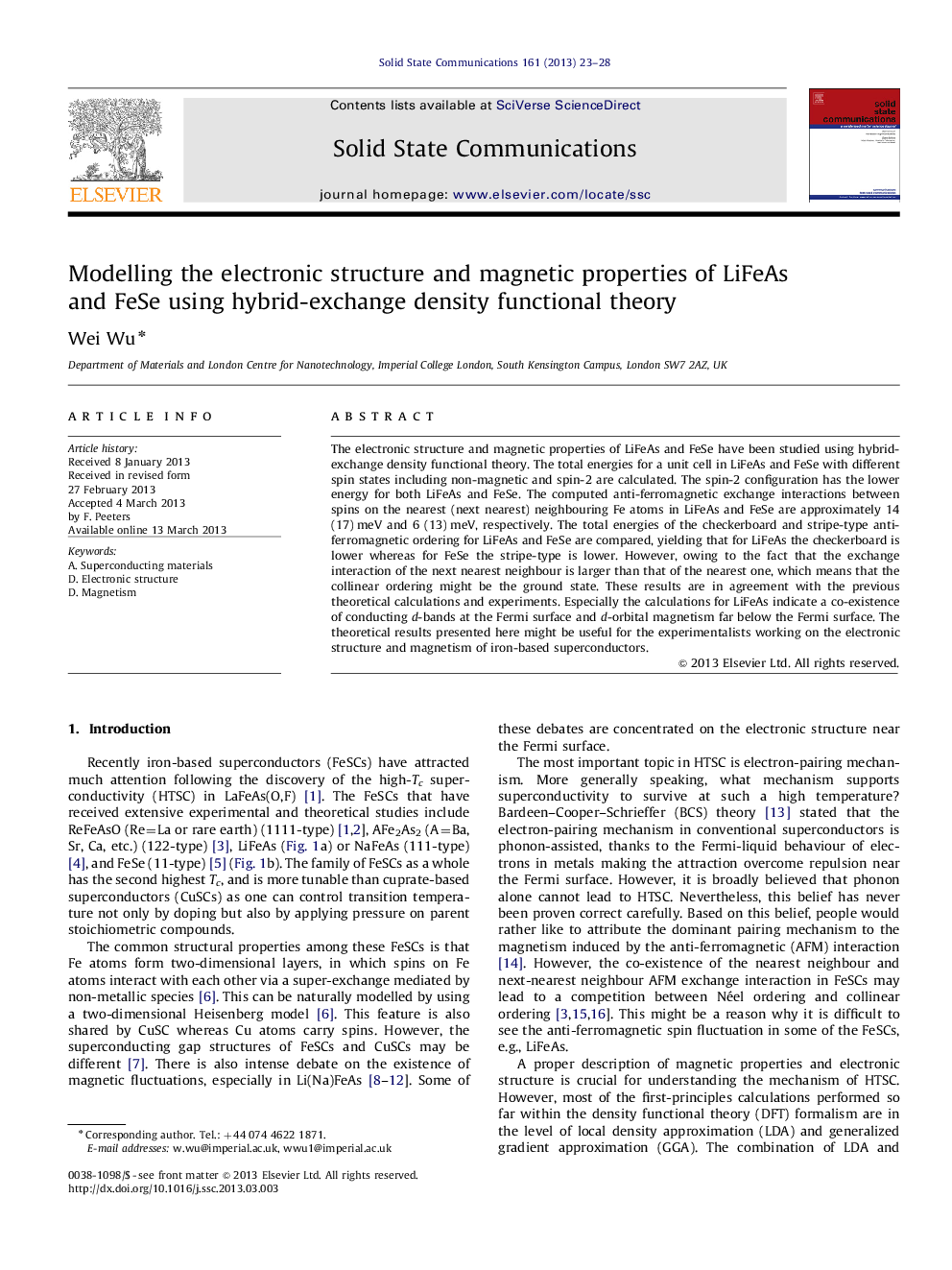| Article ID | Journal | Published Year | Pages | File Type |
|---|---|---|---|---|
| 1592396 | Solid State Communications | 2013 | 6 Pages |
The electronic structure and magnetic properties of LiFeAs and FeSe have been studied using hybrid-exchange density functional theory. The total energies for a unit cell in LiFeAs and FeSe with different spin states including non-magnetic and spin-2 are calculated. The spin-2 configuration has the lower energy for both LiFeAs and FeSe. The computed anti-ferromagnetic exchange interactions between spins on the nearest (next nearest) neighbouring Fe atoms in LiFeAs and FeSe are approximately 14 (17) meV and 6 (13) meV, respectively. The total energies of the checkerboard and stripe-type anti-ferromagnetic ordering for LiFeAs and FeSe are compared, yielding that for LiFeAs the checkerboard is lower whereas for FeSe the stripe-type is lower. However, owing to the fact that the exchange interaction of the next nearest neighbour is larger than that of the nearest one, which means that the collinear ordering might be the ground state. These results are in agreement with the previous theoretical calculations and experiments. Especially the calculations for LiFeAs indicate a co-existence of conducting d-bands at the Fermi surface and d-orbital magnetism far below the Fermi surface. The theoretical results presented here might be useful for the experimentalists working on the electronic structure and magnetism of iron-based superconductors.
► Spin-2 configuration is favoured in LiFeAs and FeSe. ► For LiFeAs the check-board is favoured, whereas for FeSe the stripe-type is favoured. ► AFM exchange interactions show a collinear ordering. ► The FM band structure of LiFeAs is half-metallic. ► A co-existence of d-orbital magnetism and conducting d-bands near the Fermi surface.
